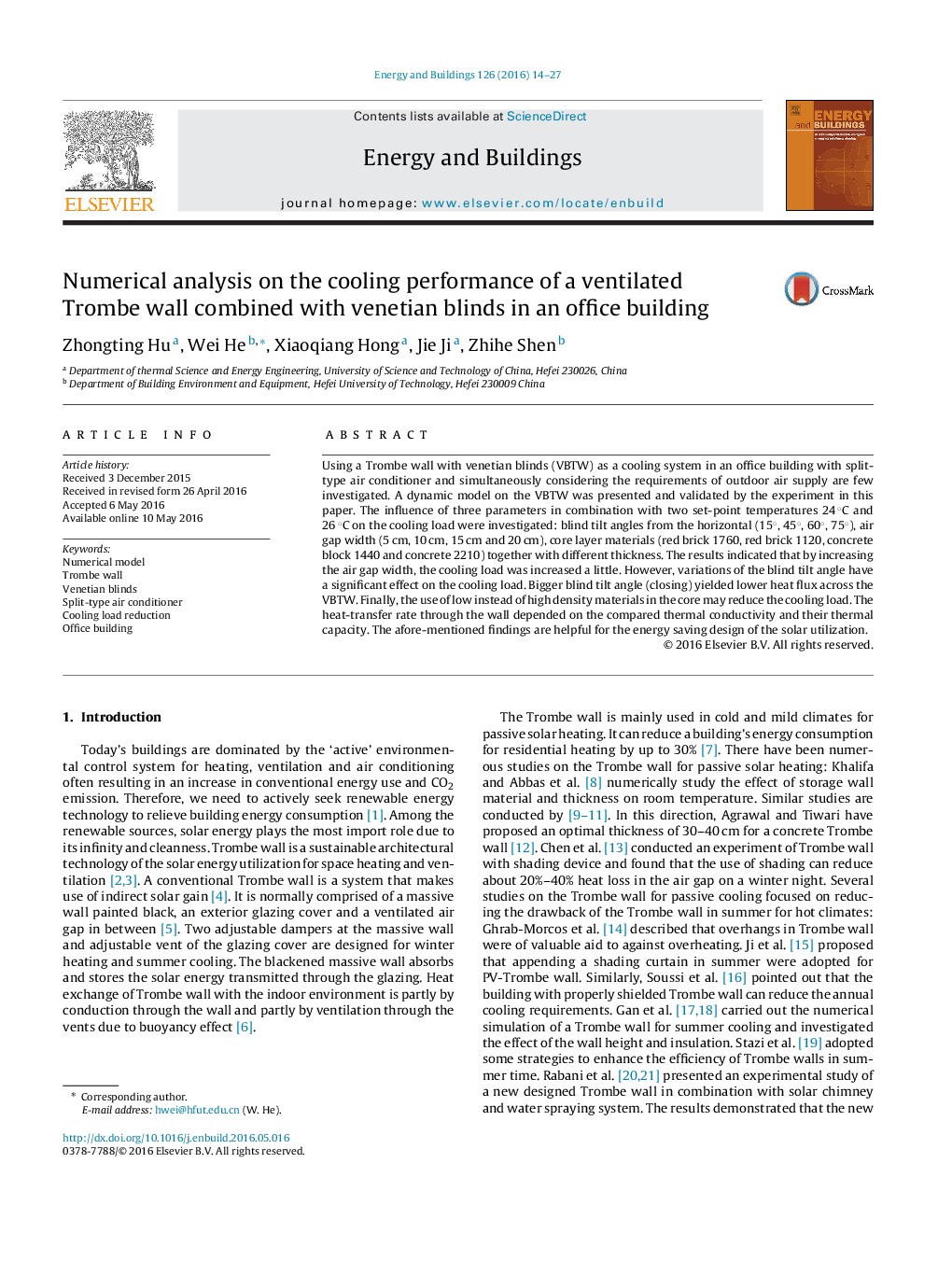| Article ID | Journal | Published Year | Pages | File Type |
|---|---|---|---|---|
| 261911 | Energy and Buildings | 2016 | 14 Pages |
•Dynamic numerical study on cooling performance of Trombe wall with venetian blinds.•The model was validated experimentally and applied to parametric study.•Air gap width was not significantly effective on the wall temperature.•Bigger blind tilt angle (closing) yielded lower heat flux across the VBTW.•The use of low density materials in the core reduced the cooling load.
Using a Trombe wall with venetian blinds (VBTW) as a cooling system in an office building with split-type air conditioner and simultaneously considering the requirements of outdoor air supply are few investigated. A dynamic model on the VBTW was presented and validated by the experiment in this paper. The influence of three parameters in combination with two set-point temperatures 24 °C and 26 °C on the cooling load were investigated: blind tilt angles from the horizontal (15°, 45°, 60°, 75°), air gap width (5 cm, 10 cm, 15 cm and 20 cm), core layer materials (red brick 1760, red brick 1120, concrete block 1440 and concrete 2210) together with different thickness. The results indicated that by increasing the air gap width, the cooling load was increased a little. However, variations of the blind tilt angle have a significant effect on the cooling load. Bigger blind tilt angle (closing) yielded lower heat flux across the VBTW. Finally, the use of low instead of high density materials in the core may reduce the cooling load. The heat-transfer rate through the wall depended on the compared thermal conductivity and their thermal capacity. The afore-mentioned findings are helpful for the energy saving design of the solar utilization.
